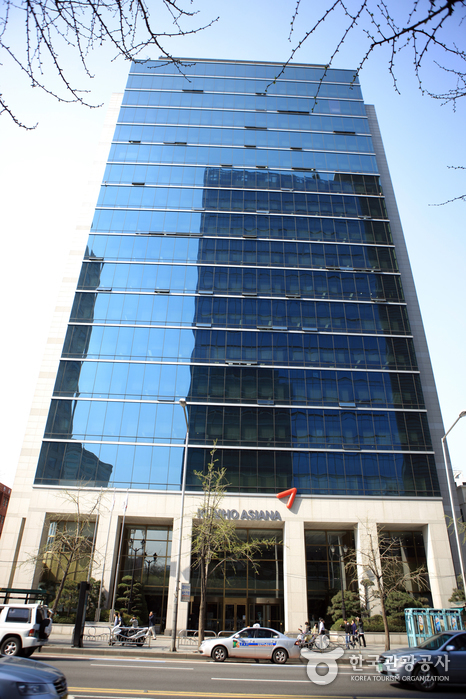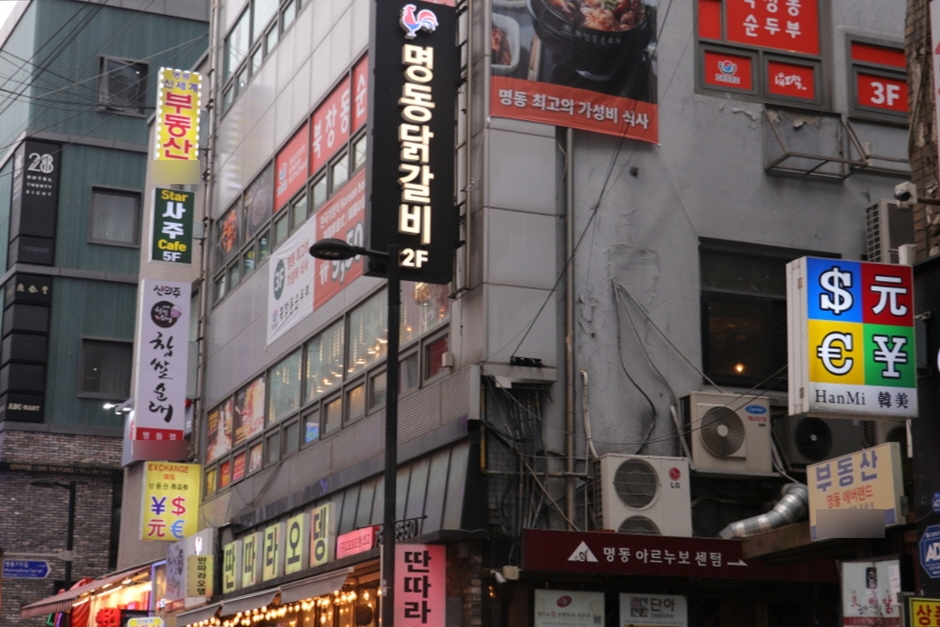Gobong Samgyetang (고봉삼계탕)
1.1Km 2024-03-12
2FL, 21, Myeongdong, 7-gil, Jung-gu, Seoul
+82-2-756-2300
Situated on Myeongdong Street, Gobong Samgyetang is renowned for samgye tang (ginseng chicken soup), which is made with plenty of invigorating Korean herbs. Patrons have the option to other delectable dishes such as dak juk (chicken porridge), jjimdak (braised chicken), and smoked duck.
WIZ & MI Clinic (위즈앤미의원)
1.1Km 2025-10-23
#401-#403, 21 Myeongdong 7-gil, Jung-gu, Seoul
WIZ & MI Clinic presents unique beauty based on tailored, customer-oriented treatments and highly skilled know-how. Systemized and specialized treatments, along with standardization, enable the clinic to offer reasonable prices. Additionally, the clinic offers customized procedures for highly satisfactory outcomes and stability without side effects.
The medical staff at WIZ & MI Clinic have proven competencies, abundant clinical experiences, and expertise. With cutting-edge equipment, the clinic's competent staff members share their know-how through live demonstrations each year. WIZ & MIi Clinic pursues 'magic total beauty' that improves and balances physical beauty with a healthy mind. For this, the clinic conducts research and strives for healthy beauty for all its customers.
It is committed to providing honest care and helping patients re-discover their magical beauty and happiness.
Kumho Art Hall (금호아트홀)
1.1Km 2021-05-28
76, Saemunan-ro, Jongno-gu, Seoul
+82-2-6303-1977
Kumho Art Hall was built in 2000 exclusively for classical music concerts, with 390 seats, the perfect structure for chamber concerts. All seats are recital hall chairs and the wide spacing between rows of chairs helps the audience to have a pleasant time. Upon entering the theater, all cell phones will turn off automatically. This helps all visitors to enjoy the concert without being interrupted by ringing cell phones. The interior is cozy and luxurious, and the stage is made of maple.
Dalgaebi (달개비)
1.1Km 2024-03-15
16 Sejong-daero 19-gil, Jung-gu, Seoul
+82-82-2-765-2035, 2068
Dalgaebi is a restaurant specializing in Korean table d'hote, using fresh seasonal ingredients. Its flagship menu is the teukseon sangcharim jeongsik (special set menu), which includes porridge, seasonal dishes, main courses, and desserts. The galbi sangcharim (galbi course), featuring premium Korean beef galbi grilled over charcoal and served with soybean paste jjigae, is also popular. Known for its private dining spaces and upscale ambiance, reservations can be made via phone.
Eun&Jeong Myeongdong Dakgalbi (은앤정명동닭갈비)
1.1Km 2024-03-11
2FL, 19, Myeongdong 7-gil, Jung-gu, Seoul
+82-2-778-1988
Situated on Myeongdong Street, Eun&Jeong Myeongdong Dakgalbi specializes in dakgalbi (spicy stir-fried chicken). They have a variety of menu options such as spicy stir-fried chicken and cheese and stir-fried chicken with garlic and soy sauce, so patrons can choose according to their preferences. In addition, rice cakes, sweet potatoes, noodles, and fried rice can be cooked together for a richer experience. In addition, customers have the option to other delectable dishes including budae jjigae (sausage jjigae), makguksu (buckwheat noodles), and samgye tang (ginseng chicken soup).
Myth Jokbal Myeongdong (미쓰족발명동)
1.1Km 2024-10-15
21, Myeongdong 3-gil, Jung-gu, Seoul
+82-2-3789-8799
This restaurant specializes in Jokbal (Braised pigs' feet) and Bossam (Napa wraps with pork), both of which are served with vegetable wraps and salad. Jokbal (Braised pigs’ feet) is prepared by braising pigs' feet in spiced stock, a process that removes excess fat, enhances the flavor, and gives the meat a chewier texture. Each order of Jokbal (Braised pigs' feet) is accompanied by Kongnamulkimchiguk (Bean sprout and kimchi soup), to which Kalguksumyeon (Noodles) are added. For those who find the dishes too spicy, the restaurant offers a self-serve Jumeokbap (Riceball), featuring laver flakes, pickled radish, and mayonnaise to cool the palate.
Toxnfill Clinic - Myeong-dong Branch [Tax Refund Shop] (톡스앤필의원 명동점)
1.1Km 2024-06-27
84, Namdaemun-ro, Jung-gu, Seoul
-
Golden Dew - Lotte Main Branch [Tax Refund Shop] (골든듀 롯데본점)
1.2Km 2024-04-17
81, Namdaemun-ro, Jung-gu, Seoul
-
Coach - Lotte Main Branch [Tax Refund Shop] (코우치 롯데본점)
1.2Km 2024-04-18
81, Namdaemun-ro, Jung-gu, Seoul
-



![Toxnfill Clinic - Myeong-dong Branch [Tax Refund Shop] (톡스앤필의원 명동점)](http://tong.visitkorea.or.kr/cms/resource/51/3314551_image2_1.jpg)
![Golden Dew - Lotte Main Branch [Tax Refund Shop] (골든듀 롯데본점)](http://tong.visitkorea.or.kr/cms/resource/32/2888332_image2_1.jpg)
![Coach - Lotte Main Branch [Tax Refund Shop] (코우치 롯데본점)](http://tong.visitkorea.or.kr/cms/resource/97/2888597_image2_1.jpg)
 English
English
 한국어
한국어 日本語
日本語 中文(简体)
中文(简体) Deutsch
Deutsch Français
Français Español
Español Русский
Русский